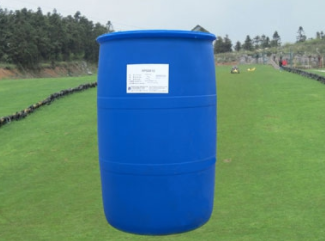Surfactant can wash, emulsify, foam, wet, soak and disperse, and the amount of surfactant is small (generally a few percent to a few thousandths). It is easy to operate, non-toxic and non corrosive. It is an ideal chemical product, so it has important applications in production and scientific research. At the same concentration, the non-polar component of surfactant is large, and its surface activity is strong. That is, among homologues, the surface activity with more carbon atoms is greater. However, when the carbon chain is too long, it has no practical value because of its low solubility in water.

The word surfactant comes from English surface. It is actually a condensation of the phrase surface active agent. It also has a name called tenside. Substances that can significantly reduce the surface tension of liquid by adding a small amount are collectively referred to as surfactants. In the view of scientific research institutions, their surface activity is for a specific liquid, which usually refers to water. One end of the surfactant is a non-polar hydrocarbon chain (hydrocarbon group), which has very little affinity with water, and is often called hydrophobic group; The other end is a polar group (such as - Oh, -cooh, -nh2, -so3h, etc.), which has a great affinity with water, so it is called hydrophilic group, which is generally called "amphiphilic molecule" (lipophilic hydrophilic molecule). In order to achieve stability, surfactant can be dissolved in water in two ways
1. A monolayer is formed on the liquid surface.
The hydrophilic group is left in the water and the hydrophobic group is extended to the air to reduce the rejection. The repulsion between hydrophobic groups and water molecules is equivalent to making the water molecules on the surface subject to an outward thrust, counteracting the inward pull of the water molecules on the surface, even if the surface tension of water is reduced. This is the basic principle of foaming, emulsifying and wetting of surfactants. In the oil-water system, surfactant molecules will be adsorbed on the oil-water interface, and the polar groups will be inserted into the water, while the non-polar parts will enter the oil and be oriented at the interface. This generates tension between the oil-water phase and reduces the interfacial tension between oil and water. This property has an important influence on the wide application of surfactants.
2. Form "micelles".
Micelles can be spherical or layered. Hydrophobic groups are hidden inside the micelles and hydrophilic groups are exposed as much as possible. If the polar group is represented by a sphere, and the hydrophobic nonpolar group is represented by a column, then the monolayers and micelles. If there are water-insoluble oils (a general term for water-insoluble organic liquids) in the solution, they can enter the center of spherical micelles and the interlayer of layered micelles and dissolve. This is called the solubilization of surfactants.